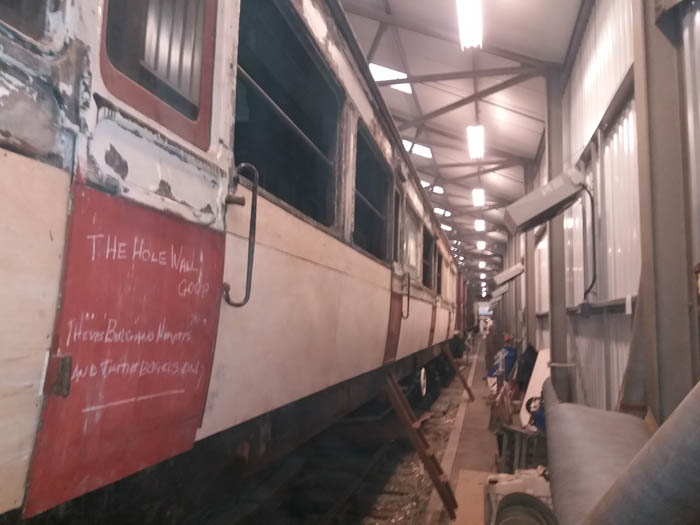
2019 - Autumn 2020
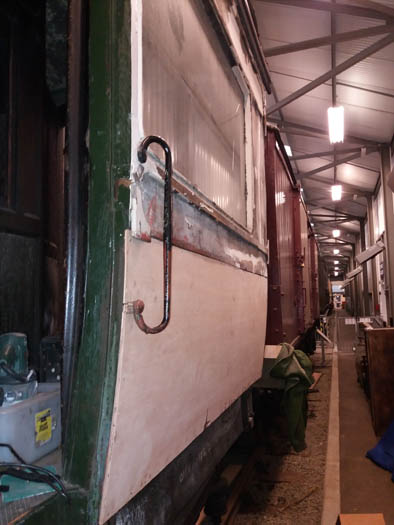
Work finally got under way towards the end of 2019, 103 years after 731 entered service. The team was the
Hole in the Wall Group of Bob Kelly, Richard Macdonald and Al McPhee, who had previously worked on 122. The first priority
was to assess the vehicle again in the museum workshop and to develop a comprehensive risk assessment and method of working.
This was duly done. The initial thinking was that the crash damage should be repaired first, and steps taken to conserve the
interior. To this end, a marathon session saw the bent solebar on the north side straightened. It was formerly 2.5 inches
out of alignment, so getting it back within tolerances was no easy task. A further kink was also discovered where the fire
had been set, though whether this had anything to do with the vandalism is uncertain. This bend was also dealt with, and the
underframe is now straight. However, it was clear that the crash damage would require more timber than was originally thought.
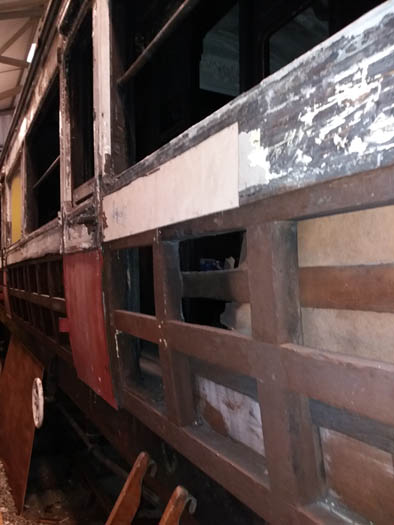
Specifications for a replacement headstock and cill were duly drawn up and sourced, and the team was able to
obtain these materials, and the large quantity of marine plywood required for the rebuild, at terms very advantageous to the
Society. The team is very conscious that many people have donated generously to the appeal, and it is of the greatest
importance to make sure that every single penny is well used.
Moreover, the easternmost compartment (No 1 compartment as this is at No 1 end above the dynamo) was selected for restoration as an exemplar for the other 6. It was cleared of parts which were stored in it and some work has started on its restoration. All the missing compartment light fittings have now been obtained, thanks to sponsorship from a member. These are contemporary light fittings as costs for reinstatement using reproduction Stones items were quite prohibitive: however, advice from renowned carriage restorer Stephen Middleton enabled very similar fittings to be obtained at a fraction of the costs. Further, the burned off footstep brackets were removed with great difficulty and much grunting, and new castings were ordered and obtained.
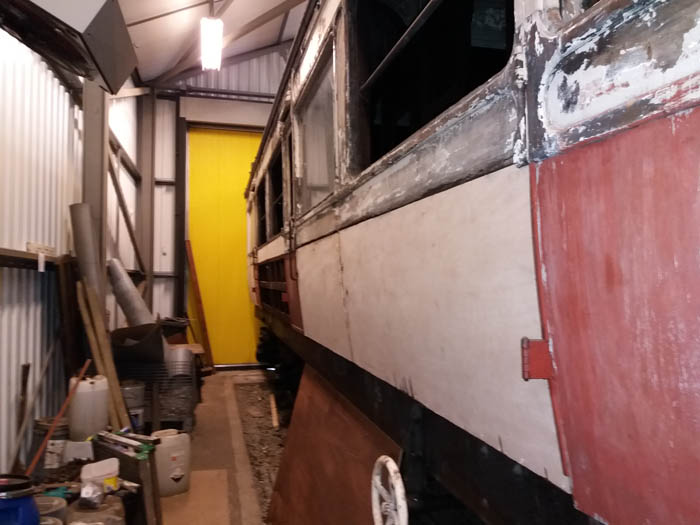
Work then commenced on the corridor side, with an urgent focus on repairing the fire damage. We have to work to a very strict protocol laid down in the Trust’s specification: thus, all original G&SWR material must be retained wherever possible. The fire damage repair was completed in this way and the rest of the corridor side framework was repaired and treated to several coats of preservative. Marine ply sheets – which are extremely heavy and hard to cut – were similarly treated with preservative on the inner side prior to a trial panel being cut and fitted at the west end. By this method, a way of working was established – and then came lockdown.
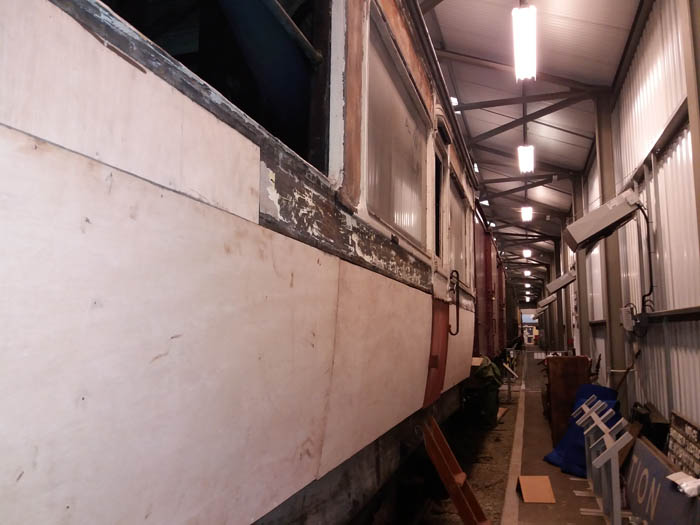
When we restarted work at the beginning of September with a diminished team, the west end panel was finally fitted after a lot of fettling and work has steadily progressed along the corridor side until at the end of October, the whole of the corridor side has now been rebuilt. In addition, the doors, including the fire damaged one (No 3) have all been freed off and are now completely operable – and lockable. Work is now in hand to re-panel these doors, and it is hope that this will be complete by the end of the year. Some frame repairs – at each end – have also been made at the compartment side, and new mouldings for the corridor side are being made in a member’s workshop.
